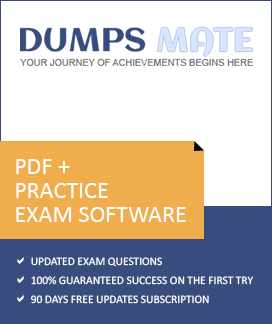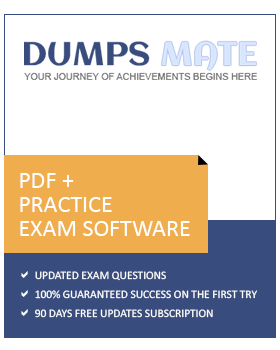How to approach the question
- This question is worth 25 marks so you can imagine what the mark scheme will look like. There are 5 Rights so there will be 5 points for each Right. Naming the Right will be one point, then you have 4 points for a description and example. You should therefore aim to have 4-5 sentences per Right.
- I would recommend using headings for this type of essay- clearly putting your essay into 5 sections for each right. This makes it easy for the examiner to mark.
Proposed Essay structure
- Introduction – what is meant by the 5 Rights
- Price
- Quality
- Quantity
- Time
- Place
- Conclusion – why it’s important, all rights are equally as important
Example Essay
Procurement revolves around achieving the delicate balance of acquiring goods and/ or services at the right price, quality, quantity, time, and place. This essay explains why these "Five Rights of Procurement" are important and explains how using this metric can help procurement to make smart choices when they purchase goods or services.
Price:
Firstly, it is important that procurement do not simply seek to find the cheapest option. The First Right is about finding the product/ service at an affordable price that doesn't compromise on quality. Let's say a company is buying office furniture. They might go for a supplier that offers a good balance between cost and quality, ensuring they get good value for their money. Considerations here may include Total Cost of Ownership, the Price Iceberg, and Whole Life Costing. The company therefore may seek to get the best price, but in relation to how long the furniture will last. A cheap chair that will break after one year may not be the best price compared to another chair which will last 10 years.
Quality:
The second right, quality, looks at legal compliance and fitness for purpose. Quality adherence aligns with specifications as well as legislation such as the UK Sale of Goods Act 1979. This helps ensure that items meet their commonly intended purpose and maintains satisfactory condition. Buyers deploy both reactive measures like Quality Control and proactive approaches like Quality Assurance to uphold the stipulated quality. This commitment not only ensures legal compliance but also underpins customer satisfaction, brand reputation, and ethical sourcing policies. An example of quality is an organisation buying a washing machine that conforms to ISO standard 97.060 and has a 2-year warrantee.
Quantity:
The third right, quantity, is a strategic consideration about how much of an item to order. It is connected to efficient inventory management. One tool that procurement can use to ensure they order the right quantity of a product is Economic Order Quantity (EOQ) – this serves as a tool for finding the equilibrium between stock-holding costs and avoiding stockouts. Market conditions, supply chain dynamics (e.g. JIT / Lean manufacturing), and organizational policies collectively play a pivotal role in determining the right quantity. For example a confectionary manufacturer will need to order the right number of eggs to make cakes- they will need to consider how many eggs they will need in order to make the cakes, but also take into consideration that they may not need them all at once and that eggs can expire. The use of an MRP system is helpful when determining quantities of products to order.
Time:
Time is about getting things when we need them. In the above example, an egg delivery timing for a confectionary manufacturer will be pivotal to making the cakes on time. Other considerations about time include changing market forces and customer demand. The use of forecasting is therefore extremely useful; particularly if there are peaks in demand for a product, such as toys at Christmas. Moreover, organizations need to avoid bottlenecks and production stoppages, so time (including lead time and delivery time) is an important consideration when making orders.
Place:
Lastly, place is about getting things to the right location. Minimizing environmental impact, reducing risks during transit, and optimizing warehousing practices contribute to achieving the right place. This is particularly important for perishable items such as food, and for items which require specific storage conditions such as chemicals. This involves good planning in terms of logistics, minimizing any impact on the environment during transport and a consideration for safety.
In conclusion, the Five Rights of Procurement provide a structured framework for organizations to optimize their sourcing practices. All rights are equally as important and it is the relationship between the Rights which is key. While price, quality, quantity, time, and place form the foundation, evolving models acknowledge additional elements like the Right Relationship with the Supplier. Embracing these principles not only ensures operational efficiency but also promotes sustainability and ethical conduct throughout the procurement process, contributing to long-term success in a globalized and dynamic marketplace.
Tutor Notes
- The 5 Rights is a big topic in CIPS so do learn them off by heart. It’s p. 20 in the study guide.
- The conclusion mentions that additional ‘rights’ are starting to be introduced into the matrix, this is true and isn’t mentioned in this study guide. I believe this starts to come up in Level 5. Just something to be aware of- some people are now talking about other Rights such as finding the right supplier and the right relationship. It’s good to know, but not essential for this essay. Neither is knowing the ISO standard for washing machines – that’s certainly not in the book. You can sprinkle in your own knowledge to essays like this, as it demonstrates you’re able to apply the theory to real life. Why I remember the ISO for washing machines is a different story….
- You could also have mentioned the following topics;
o price – using the right currency and incoterm, aggregation of spend, negotiating prices
o quality – conformance and performance specs
o quantity – fulfilling retail orders, large order quantities leading to discount
o time – additional costs of a stockout, impact on relationships and reputation
o place – additional costs if delivery fails
- This is the type of question you can easily over-write. It’s a huge topic and you could easily spend too long on it and not have enough time to answer other questions. So be careful with your timings. You don’t need to mention everything above.
- Another way this type of question can come up is as a scenario. E.g. XYZ is a manufacturer of cakes and needs to order eggs. Discuss how XYZ can ensure the 5 Rights of Procurement when ordering Eggs.






